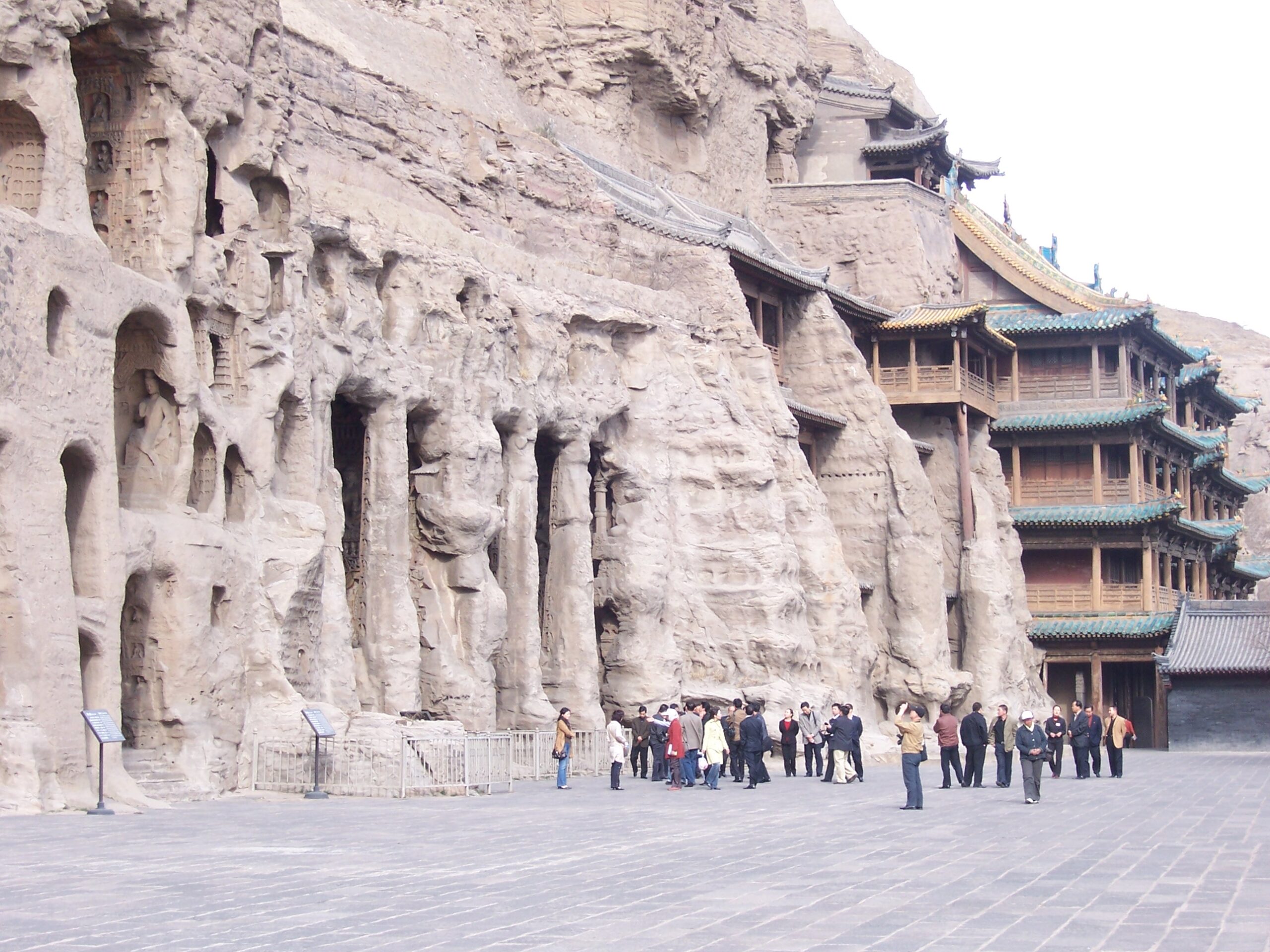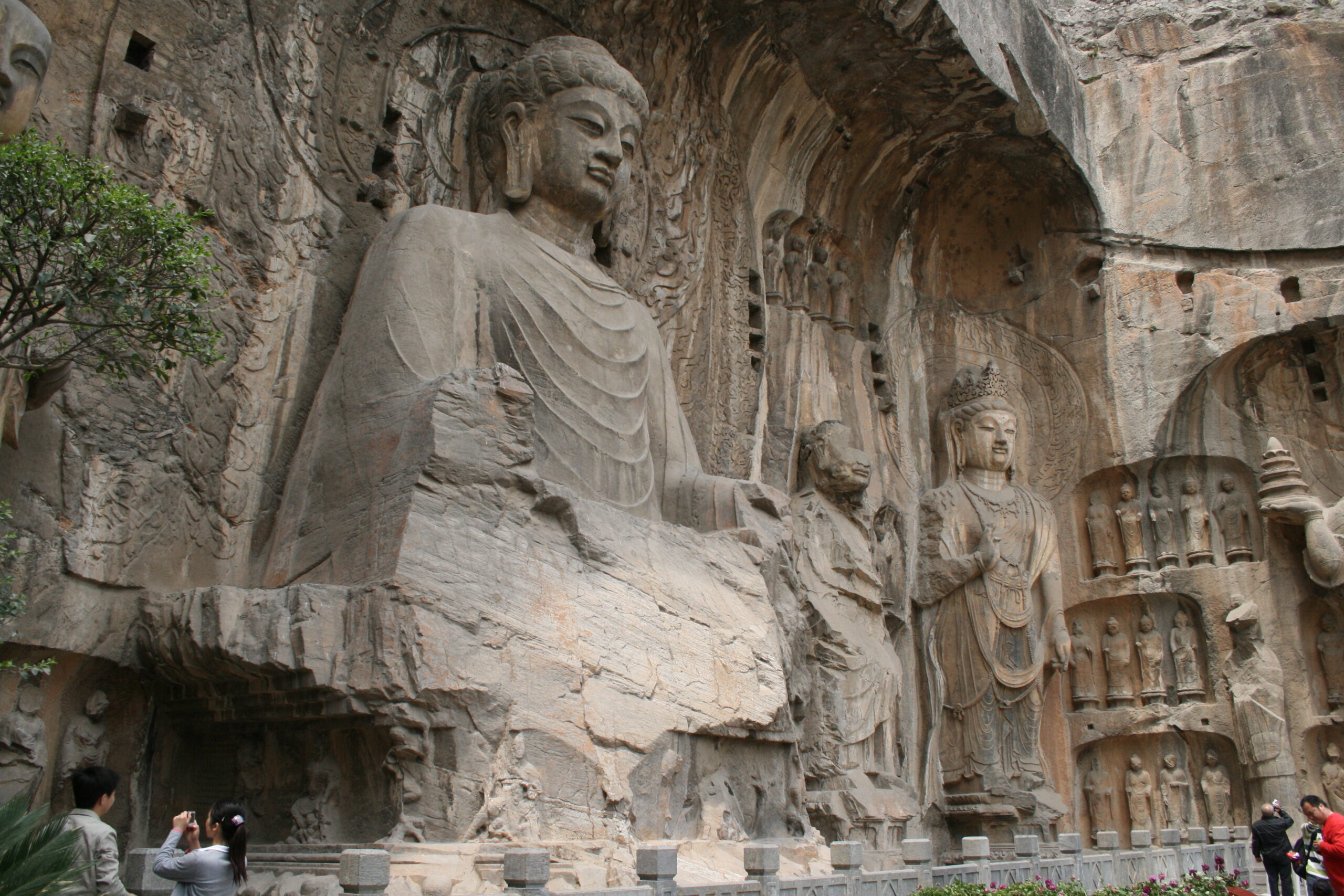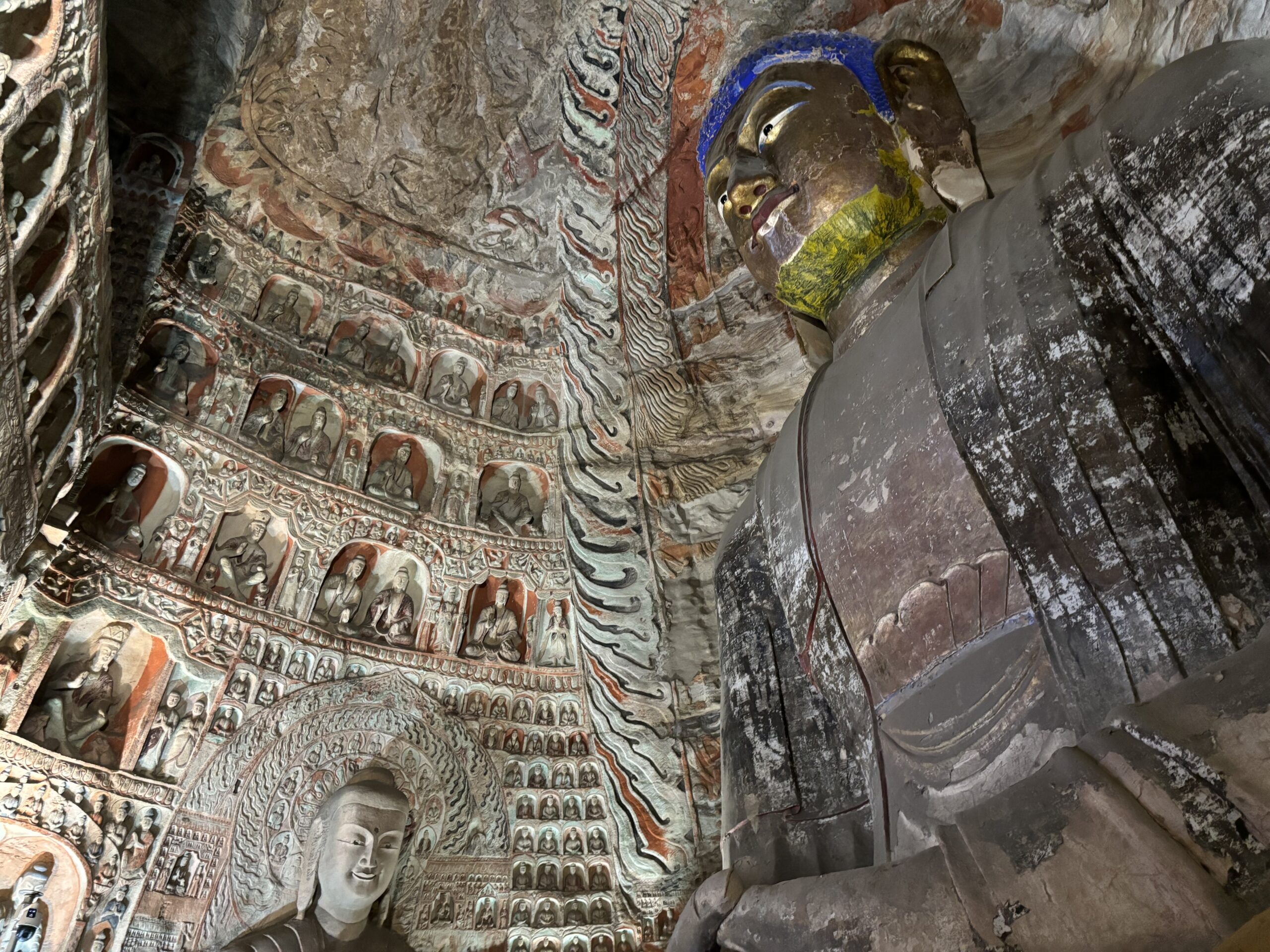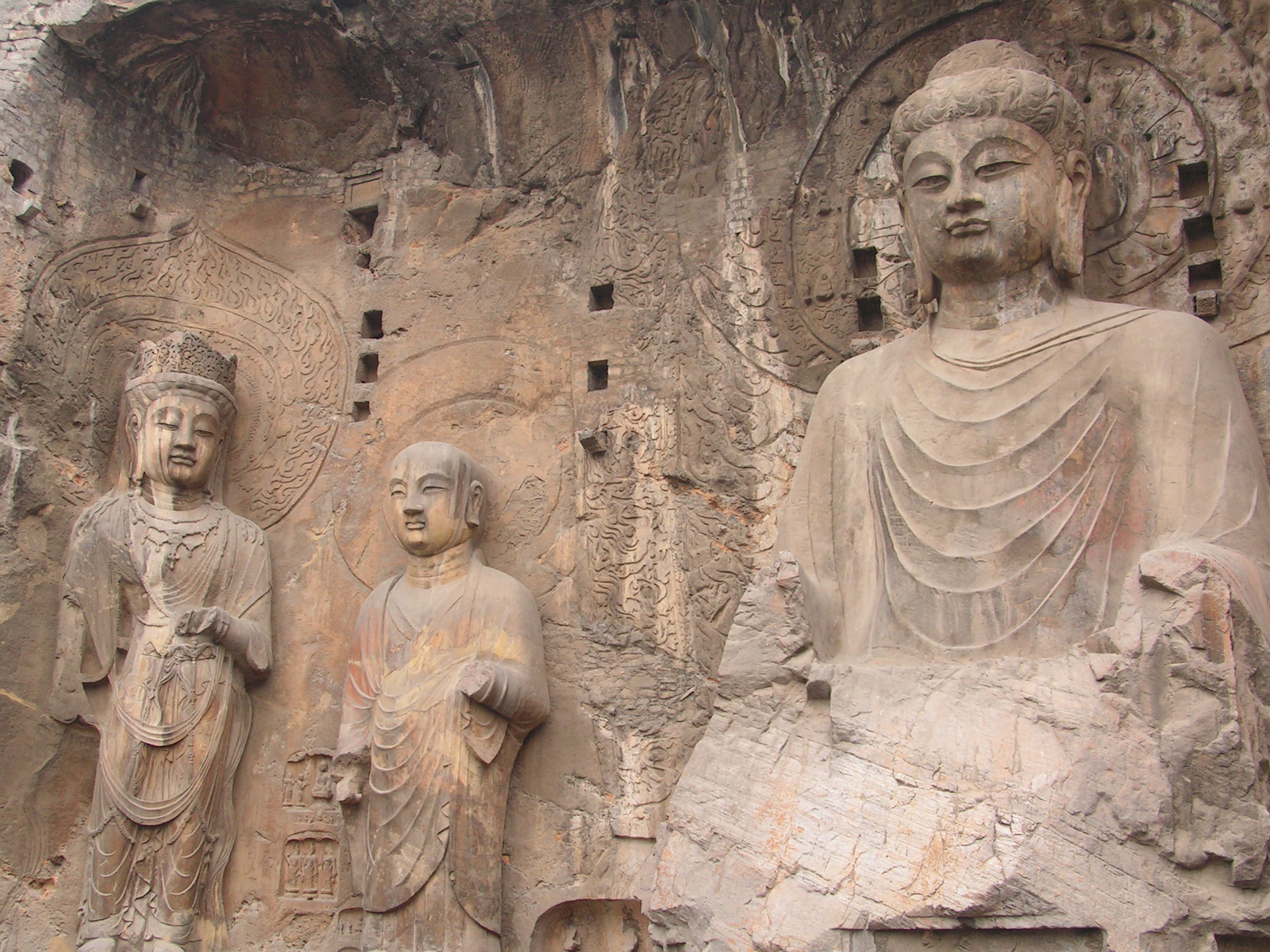Yungang Grottoes vs Longmen Grottoes: Which Buddhist Treasure Should You Visit in China?
When planning your China adventure, choosing between Yungang Grottoes and Longmen Grottoes can feel overwhelming. We’ve explored both sites extensively and understand this dilemma. These ancient Buddhist masterpieces represent two of China’s most spectacular cultural treasures, each offering unique experiences that captivate travelers worldwide.
Both sites rank among China’s top three Buddhist cave complexes alongside Mogao Caves. However, they differ significantly in architecture, historical periods, artistic styles, and visitor experiences. This comprehensive comparison will help you make an informed decision based on your travel preferences, time constraints, and cultural interests.
Table of Contents
Comprehensive Site Comparison
Feature | Yungang Grottoes | Longmen Grottoes |
|---|---|---|
Location | Datong, Shanxi Province | Luoyang, Henan Province |
Primary Dynasty | Northern Wei (460-525 CE) | Northern Wei to Tang (493-1127 CE) |
Rock Material | Sandstone cliffs | Limestone formations |
Total Cave Count | 252 major caves | 2,345 documented caves |
Buddha Statues | 51,000+ sculptures | 110,000+ carved figures |
UNESCO Recognition | World Heritage Site 2001 | World Heritage Site 2000 |
Preservation Status | Excellently preserved | Moderately weathered |
Annual Visitors | 1.2 million average | 2.8 million average |
Peak Construction Period | 460-494 CE (34 years) | 493-907 CE (414 years) |
Largest Buddha Height | 17 meters (Cave 5) | 17.14 meters (Vairocana) |
Historical Development Timeline
Period | Yungang Grottoes | Longmen Grottoes |
|---|---|---|
Northern Wei Early (460-494) | Major imperial caves constructed | Site establishment begins |
Northern Wei Late (494-534) | Smaller caves and refinements | Significant expansion period |
Eastern Wei (534-550) | Limited new construction | Continued development |
Northern Qi (550-577) | Minor additions only | Modest artistic contributions |
Sui Dynasty (581-618) | Minimal activity | Renewed construction interest |
Tang Dynasty (618-907) | Virtual abandonment | Golden age of construction |
Song to Qing (960-1911) | Occasional maintenance | Sporadic additions and repairs |
The historical timeline reveals why these sites developed such different characteristics. Yungang represents concentrated imperial patronage during a specific period, while Longmen evolved continuously over centuries, reflecting changing artistic tastes and religious practices.
Artistic Style Evolution Comparison
Artistic Element | Yungang Characteristics | Longmen Characteristics |
|---|---|---|
Facial Features | Deep-set eyes, pronounced noses | Softer Chinese features |
Body Proportions | Robust, Gandhara-influenced | Elegant, refined Chinese style |
Drapery Style | Flowing Hellenistic folds | Natural Chinese fabric representation |
Cultural Influence | Strong Greco-Buddhist fusion | Mature Chinese Buddhist tradition |
Carving Technique | Bold, monumental approach | Sophisticated, detailed workmanship |
Color Preservation | Extensive original pigments remain | Most colors weathered away |
Iconographic Program | Imperial Buddhist symbolism | Diverse religious and social themes |
Understanding the Historical Context
Yungang Grottoes: Northern Wei’s Buddhist Renaissance

The Yungang Grottoes emerged during a transformative period in Chinese history. Emperor Xiao Wen of the Northern Wei dynasty commissioned these caves near Datong around 460 CE as imperial penance for earlier Buddhist persecution. The project began when Pingcheng (modern Datong) served as the Northern Wei capital, making these caves a statement of imperial Buddhist devotion.
What makes Yungang extraordinary is its timing and cultural context. These caves represent the first major Buddhist art project after Buddhism gained official acceptance in Northern China. The artistic style reflects profound Greco-Buddhist influences transmitted through Silk Road trade routes, creating sculptures that masterfully blend Eastern and Western aesthetic traditions.
The construction occurred in three distinct phases spanning 65 years. The first phase (460-470 CE) produced the Five Imperial Caves, each dedicated to a Northern Wei emperor. The second phase (471-494 CE) saw the creation of the most elaborate caves with complex architectural programs. The final phase (494-525 CE) focused on smaller, more intimate caves reflecting changing religious practices.
Longmen Grottoes: Tang Dynasty’s Buddhist Culmination

Longmen Grottoes began around 493 CE when the Northern Wei relocated their capital from Datong to Luoyang. However, the site’s golden age occurred during the Tang Dynasty, particularly under Empress Wu Zetian’s patronage. The location choice proved strategic, as Luoyang served as China’s eastern capital, and the Yi River valley provided ideal limestone cliffs for extensive carving projects.
Unlike Yungang’s concentrated construction period, Longmen developed organically over centuries. This extended timeline allowed Buddhist art to evolve from foreign-influenced early works to thoroughly Chinese expressions. The famous Fengxian Temple, completed in 675 CE with Empress Wu Zetian’s sponsorship, demonstrates how Buddhist art achieved complete integration with Chinese aesthetic principles.
The site’s continuous development reflects Buddhism’s gradual integration into Chinese society. Early caves served imperial and aristocratic patrons, while later additions accommodated wealthy merchants and common believers. This social diversification created the remarkable variety visitors experience today.
Geological and Preservation Factors
Preservation Aspect | Yungang Advantages | Longmen Challenges |
|---|---|---|
Rock Composition | Durable sandstone formation | Softer limestone susceptible to weathering |
Climate Protection | Natural cave depth shields sculptures | River valley exposure increases deterioration |
Historical Damage | Remote location limited vandalism | Urban proximity increased human interference |
Original Features | Extensive paint and fine details survive | Most surface details weathered or damaged |
Conservation Status | Proactive modern preservation programs | Extensive restoration efforts ongoing |
Environmental Threats | Sandstorms and industrial pollution | Humidity, temperature fluctuation, acid rain |
Yungang’s superior preservation stems from multiple factors. The sandstone composition naturally resists weathering better than limestone. The cave orientation and depth provide additional protection from elements. Most importantly, Datong’s relative isolation throughout history protected the site from extensive human damage that affected more accessible locations.
Longmen faces greater preservation challenges due to its limestone construction and river valley location. The softer stone, while easier for ancient carvers to work, proves more vulnerable to erosion and weathering. Many sculptures show significant detail loss, and numerous Buddha heads were removed during various historical periods, creating the distinctive headless statues visitors encounter today.
Visitor Experience Analysis
Experience Factor | Yungang Grottoes | Longmen Grottoes |
|---|---|---|
Daily Visitor Capacity | 6,000 maximum | 8,000 maximum |
Average Visit Duration | 3-4 hours comprehensive tour | 4-6 hours full exploration |
Physical Difficulty Level | Easy to moderate walking | Moderate to challenging climbing |
Crowd Management | Generally well-controlled | Can be very crowded during peak times |
Photography Opportunities | Excellent with better-preserved subjects | Good but challenging lighting conditions |
Educational Resources | Modern museum with interactive displays | Traditional exhibits and guided tours |
Accessibility Features | Wheelchair accessible main routes | Limited accessibility due to terrain |
Exploring Yungang Grottoes

Our extensive experience at Yungang reveals a more contemplative and manageable visitor experience. The site layout follows a logical progression from the museum through the major cave complexes. The flat terrain and well-maintained pathways make exploration comfortable for visitors of varying physical abilities.
The recently opened Yungang Museum provides essential context through artifacts, detailed models, and interactive displays. We recommend beginning your visit here to understand the historical background and artistic significance before entering the caves themselves. The museum’s climate-controlled environment also offers respite during extreme weather conditions.
Cave accessibility at Yungang is generally excellent. Most major caves remain open to visitors, though some require special permissions or additional fees. The preservation quality means you can observe fine sculptural details and original paint traces that enhance understanding of ancient artistic techniques. However, flash photography is strictly prohibited to protect these irreplaceable artworks.
Longmen Grottoes Adventure

Longmen offers a more physically demanding but equally rewarding experience. The river valley setting creates stunning natural scenery that complements the artistic treasures. The approach across Dragon Gate Bridge provides dramatic first views of the limestone cliffs honeycombed with thousands of caves.
The site requires significant physical effort to explore comprehensively. Extensive stairs and pathways connect different cave levels, and the climbing can be strenuous. However, this physical challenge rewards visitors with constantly changing perspectives and intimate encounters with sculptures at various scales.
The Eastern Hills across the Yi River provide a peaceful contrast to the busier Western Hills. Here, visitors can explore quieter temple complexes and enjoy reflective moments away from the main tourist crowds. The river crossing itself becomes part of the experience, offering photography opportunities and scenic appreciation.
Transportation and Accessibility Comparison
Transportation Factor | Yungang Access | Longmen Access |
|---|---|---|
Nearest Airport | Datong Yungang Airport (20km) | Luoyang Beijiao Airport (10km) |
High-Speed Rail | Datong South Station | Luoyang Longmen Station |
Travel Time from Beijing | 2 hours by high-speed rail | 4 hours by high-speed rail |
Local Public Transport | Bus Route 3 direct service | Multiple bus routes and metro connections |
Taxi Cost from City Center | 40-60 RMB approximately | 30-50 RMB approximately |
Hotel Shuttle Availability | Limited organized tour options | Widely available from major hotels |
Parking Facilities | Adequate parking with reasonable fees | Large parking areas but can fill quickly |
Reaching Yungang Grottoes
Datong’s transportation infrastructure has improved significantly with the opening of Datong Yungang Airport and high-speed rail connections. The airport receives flights from major Chinese cities including Beijing, Shanghai, and Xi’an. Airport shuttles and taxis provide convenient transfers to the city center, though advance booking is recommended during peak seasons.
The high-speed rail connection from Beijing takes approximately two hours, making Yungang accessible for day trips from the capital. Datong Railway Station serves both high-speed and conventional trains, with good connections to urban transportation networks.
Local transportation to Yungang is straightforward. Bus Route 3 connects downtown Datong directly to the grottoes, operating frequently throughout the day. Taxis provide door-to-door service at reasonable rates. Many hotels offer shuttle services for organized tour groups, which can be cost-effective for families or small groups.
Getting to Longmen Grottoes
Luoyang’s larger size and central location provide more transportation options. Luoyang Beijiao Airport has expanded services but still offers fewer international connections than major hub airports. However, the domestic flight network adequately serves most Chinese cities.
Rail connections are excellent, with both Luoyang Railway Station and the newer Luoyang Longmen Station providing high-speed rail access. The journey from Beijing takes about four hours, while Xi’an connections require approximately two hours. These rail connections make Longmen easily combinable with other major tourist destinations.
Local transportation benefits from Luoyang’s developed urban infrastructure. Metro Line 1 connects to bus transfers serving Longmen Grottoes. Multiple bus routes provide direct service, and the extensive taxi network ensures convenient access. Tourist buses operating from major hotels offer organized transportation with guide services.
Cultural and Educational Value Comparison
Learning Opportunity | Yungang Offerings | Longmen Offerings |
|---|---|---|
Silk Road Cultural Exchange | Excellent Greco-Buddhist fusion examples | Limited early period examples |
Chinese Buddhist Art Evolution | Early adaptation period | Complete maturation process |
Imperial Patronage History | Northern Wei imperial caves | Tang dynasty imperial projects |
Artistic Technique Development | Advanced stone-carving innovations | Sophisticated limestone working |
Religious Practice Evolution | Early Chinese Buddhist adaptation | Diverse Buddhist sect representations |
Social History Insights | Primarily elite patronage | Broad social class participation |
Yungang’s Silk Road Cultural Story

Yungang tells the fascinating story of cultural exchange along the Silk Road trade routes. The artistic fusion visible throughout the caves demonstrates how Buddhist concepts adapted to Chinese sensibilities while maintaining international connections. This cultural dialogue created unique artistic expressions found nowhere else in the world.
The educational value extends beyond art appreciation. Visitors can observe how political decisions influence cultural development. Emperor Xiao Wen’s Buddhist patronage represented strategic policy designed to legitimize Northern Wei rule over a predominantly Chinese population. The caves thus serve as historical documents written in stone.
The site offers insights into ancient technical innovations. The engineering required to create these massive caves without modern equipment demonstrates sophisticated understanding of geology and construction. The preservation of original architectural elements allows detailed study of ancient building techniques.
Longmen’s Chinese Buddhist Maturation

Longmen showcases Buddhism’s complete integration into Chinese civilization. The evolution from Northern Wei to Tang dynasty styles illustrates how foreign religious traditions became authentically Chinese while maintaining their essential spiritual character. This transformation process offers valuable lessons about cultural adaptation and religious development.
The historical insights available at Longmen extend across multiple dynasties and social levels. Empress Wu Zetian’s Buddhist patronage demonstrates how political leaders used religious art for legitimacy and cultural influence. The diverse cave types reflect Buddhism’s spread across social classes, from imperial temples to merchant family shrines.
The site provides unique perspectives on changing Buddhist practices over centuries. Early caves reflect Indian and Central Asian influences, while later additions show distinctly Chinese interpretations. This evolution helps visitors understand how religions adapt to local cultures while maintaining core teachings.
Seasonal Visiting Strategies
Season | Yungang Conditions | Longmen Conditions |
|---|---|---|
Spring (March-May) | Comfortable temperatures, clear photography conditions | Mild weather, beautiful river valley scenery |
Summer (June-August) | Hot but manageable, natural cave cooling | Very hot, early morning visits recommended |
Autumn (September-November) | Ideal conditions, excellent visibility | Perfect weather, comfortable climbing |
Winter (December-February) | Cold but magical snow scenes possible | Milder climate, fewer crowds |
Spring visits offer optimal conditions at both sites. Comfortable temperatures make extended cave exploration pleasant, while clear skies enhance photography opportunities. The moderate weather attracts fewer crowds than summer peak season, creating more intimate appreciation experiences.
Summer presents challenges but remains viable with proper planning. Both sites can be hot, but cave interiors provide natural cooling. Starting early helps avoid afternoon heat and crowds. Summer also offers extended daylight hours for comprehensive exploration.
Autumn represents the ideal visiting season for serious cultural tourists. Cool, clear weather provides perfect conditions for extended exploration and photography. The traditional Chinese association between autumn and contemplation makes this season particularly meaningful for Buddhist site visits.
Winter visits offer unique advantages despite weather challenges. Yungang’s northern location experiences cold winters with occasional snow, but this creates magical photographic opportunities. Longmen’s milder winter climate makes year-round visits comfortable, while reduced tourist numbers create more intimate exploration experiences.
Photography and Documentation Guide
Photography Aspect | Yungang Advantages | Longmen Considerations |
|---|---|---|
Lighting Conditions | Good natural cave lighting | Challenging contrasts and shadows |
Preservation Detail | Fine details and colors visible | Focus on overall composition |
Crowd-Free Shots | More opportunities available | Early morning essential |
Equipment Requirements | Standard tourist photography gear | Tripod and telephoto recommended |
Special Permissions | Some caves require photo fees | General photography permitted |
Best Shooting Times | 8-10 AM and 3-5 PM | Early morning before 9 AM |
Photography at Yungang benefits from superior preservation and better natural lighting. The original colors and fine sculptural details provide exceptional subjects for detailed documentation. However, flash photography is strictly prohibited to protect the artworks. We recommend bringing a tripod for low-light cave interiors and using high ISO capabilities for darker areas.
Longmen photography requires different strategies due to limestone surfaces that create harsh contrasts. The river valley setting provides landscape photography opportunities, but the limestone can be challenging in bright sunlight. Overcast conditions often produce more even lighting for sculpture photography.
Budget Planning Comparison
Expense Category | Yungang Costs (RMB) | Longmen Costs (RMB) |
|---|---|---|
Standard Entrance Ticket | 120-140 per person | 100-120 per person |
Audio Guide Rental | 20-30 per device | 20-30 per device |
Photography Permits | Special caves extra cost | Generally included |
Transportation from City | 40-80 round trip | 30-60 round trip |
On-site Dining | 50-150 per meal | 60-200 per meal |
Nearby Accommodation | 200-800 per night | 250-1000 per night |
Professional Guide Service | 200-400 per day | 300-500 per day |
Budget considerations favor Yungang slightly for basic visits, though both sites remain reasonably priced for the cultural value provided. Longmen’s higher accommodation costs reflect Luoyang’s larger size and greater tourism infrastructure, but also provide more lodging options across different price ranges.
Both sites offer good value for money considering their UNESCO World Heritage status and cultural significance. The entrance fees include access to most areas, though some special caves at Yungang require additional payments. We recommend budgeting extra for professional guide services, as the historical and artistic complexity benefits greatly from expert interpretation.
Decision-Making Framework
Choose Yungang Grottoes When You Prioritize

Artistic Preservation: If seeing Buddhist art in its original glory matters most to you, Yungang’s superior preservation provides unmatched opportunities to observe fine details, original colors, and sophisticated carving techniques that time has erased elsewhere.
Cultural Exchange History: For travelers interested in Silk Road cultural exchanges and international artistic influences, Yungang offers the best examples of Greco-Buddhist fusion art in China. The sculptures tell stories of ancient globalization and cultural dialogue.
Contemplative Experience: If you prefer quieter, more reflective site visits, Yungang’s lower visitor numbers and peaceful atmosphere create ideal conditions for deep cultural appreciation without constant crowd pressure.
Accessibility Requirements: Visitors with mobility limitations will find Yungang more accommodating due to flat terrain, shorter walking distances, and better wheelchair accessibility for major viewing areas.
Choose Longmen Grottoes When You Value

Dramatic Natural Setting: The Yi River valley location provides stunning scenery that enhances the cultural experience. The natural beauty complements the artistic treasures, creating memorable photographic opportunities and scenic appreciation.
Comprehensive Exploration: With over 2,300 caves spanning multiple historical periods, Longmen offers virtually unlimited discovery opportunities. Serious Buddhist art enthusiasts can spend days exploring different areas and historical layers.
Chinese Buddhist Art Evolution: For understanding how Buddhism became thoroughly Chinese, Longmen provides the complete story from early adaptation through mature integration. The Tang dynasty achievements represent Chinese Buddhist art at its peak.
Adventure Element: The physical challenges of climbing between cave levels and exploring extensive pathways appeal to travelers who enjoy active cultural tourism combining hiking with historical exploration.
Consider Visiting Both Sites If You
Have Extended China Travel Time: Both sites deserve thorough exploration for complete understanding. A comprehensive Buddhist art tour benefits from experiencing both Silk Road influences and Chinese artistic maturation.
Are Researching Buddhist Art Development: Academic or serious cultural tourists gain invaluable insights from comparing these sites directly. Together they tell the complete story of Buddhist art’s development in China.
Want Ultimate Cultural Understanding: The contrast between these sites illuminates broader themes about cultural adaptation, religious integration, and artistic evolution that apply beyond Buddhist studies to general cultural understanding.
Frequently Asked Questions
Can I visit both sites during peak season without advance booking?
No, this is no longer possible as of 2025. Yungang requires 7-day advance booking, while Longmen requires real-name registration. Both sites have implemented these policies to manage overcrowding and protect the cultural relics. We strongly recommend booking tickets online before your China trip.
How do the new night tours at Longmen enhance the experience?
The night illumination tours at Longmen (available April-October) transform the limestone caves with carefully designed lighting that highlights sculptural details invisible during day visits. The evening atmosphere creates a mystical experience, though it requires an additional 60 RMB fee beyond regular admission.
Are the 2025 ticket prices worth the cultural experience?
Absolutely. Despite recent price updates (Yungang: 100-120 RMB, Longmen: 90 RMB), both sites offer exceptional value considering their UNESCO status and irreplaceable cultural significance. The admission includes access to most areas, professional multilingual audio guides, and world-class preservation efforts.
Which site is better for photography enthusiasts?
Yungang offers superior photographic subjects due to better preservation, original colors, and fine details. However, Longmen provides more diverse compositions combining natural scenery with cultural elements. Professional photographers often prefer Yungang for detailed documentation and Longmen for artistic interpretation.
Are these sites suitable for children and elderly visitors?
Yungang accommodates all ages better due to flat terrain and shorter walking distances. The museum provides engaging interactive displays for children. Longmen’s extensive climbing and longer walking distances may challenge elderly visitors or families with small children, though the adventure appeals to active families.
What’s the best way to learn about Buddhist art before visiting?
We recommend reading about Buddhist iconography, Northern Wei and Tang dynasty history, and Silk Road cultural exchange before your visit. The Yungang Museum provides excellent preparation, while online resources about Buddhist art symbolism enhance appreciation at both sites.
How do weather conditions affect the visiting experience?
Both sites remain accessible year-round, though comfort levels vary. Spring and autumn offer ideal conditions. Summer heat is manageable with early starts and cave cooling. Winter adds atmospheric beauty but requires warm clothing, especially at Yungang’s northern location.
Which site offers better facilities for international visitors?
Both sites provide adequate facilities, though Longmen’s location near a larger city offers more comprehensive services. English-language materials are available at both locations, and audio guides provide essential historical context in multiple languages.
Making Your Final Decision
The choice between Yungang and Longmen ultimately depends on your travel priorities, time constraints, and cultural interests. Both sites represent irreplaceable cultural treasures that reward visitors with profound insights into Chinese Buddhist art and history.
Yungang appeals to travelers seeking pristine artistic preservation, international cultural fusion, and contemplative experiences. The site offers manageable exploration with maximum cultural impact, making it ideal for visitors with limited time or mobility considerations.
Longmen attracts adventurous travelers who enjoy comprehensive exploration, dramatic natural settings, and witnessing cultural evolution across centuries. The site rewards physical effort with diverse discoveries and photogenic combinations of nature and art.
For the ultimate Buddhist art experience, consider both sites if your schedule permits. Together, they provide complete understanding of how Buddhist art adapted to Chinese culture while maintaining its essential spiritual message. This cultural dialogue between foreign influences and local traditions offers insights relevant far beyond art appreciation, illuminating how civilizations learn from each other while maintaining their unique identities.
Whatever your choice, both Yungang and Longmen Grottoes will provide unforgettable encounters with some of humanity’s greatest artistic achievements. These ancient caves continue speaking across centuries, sharing stories of faith, creativity, and cultural exchange that remain as relevant today as when master craftsmen first carved them from living rock.








